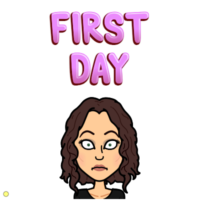
In my role as an edtech coach, I have done a great deal of research about hybrid models used in schools as a result of the COVID19 pandemic. I have supported teachers in lesson planning and logistics, read countless articles, observed several classrooms with hybrid environments, and spoken with dozens of educators who are using a variety of methods for their hybrid instruction. But theory alone is not the same as experience.
Recently, I was asked to train teachers to implement a hybrid concurrent/hyflex model. Educators were preparing to reopen school with approximately half of their students in the physical classroom, while the other half join in from home via video call on zoom. While my research of this model was solid, I myself had never delivered instruction in this way. I felt that the best way to support the teachers I would be working would be to model it myself. Was this new to me? Yes. Did I experience some anxiety? Yes. But I believe the best way to learn is to experience, and so I moved forward with my plan of delivering the professional learning experience using a hyflex model. Here is a summary of some things I learned when implementing hybrid concurrent, AKA hyflex, instruction.
- Amplify Your Remote Students’ Voice: Educators who joined the session in person were active in conversations about learning and asked questions verbally during the session. As an instructor, I had to make a conscious effort to ensure remote students did not get forgotten. I monitored the zoom on my laptop and continually glanced at the screen to see if a student had a virtual hand raised. I also connected the output sound from zoom to the viewsonic board in the physical classroom, so that students in the physical classroom were able to hear comments from remote students.
- Become a Parrot: When an educator in person answered or asked a question, I repeated what they said to ensure that the remote students were able to hear what was said. Educators on the zoom indicated that this helped to ensure they felt included in the class.
- Use Digital Platforms to Connect: During a portion of the session students both in the physical classroom and also those joining from home on zoom joined a PearDeck live lesson. This platform or other similar platforms such as Nearpod and Quizizz Lessons support collaboration amongst physical and virtual students. These digital platforms also increase engagement and accountability. As I moved through the live digital lesson, both physical and virtual students were logged in with me and engaged in interactive questions.
- Asynchronous Tasks Can Be Valuable: In accordance to the brain research of Universal Design for Learning, student motivation increases when we empower students with choice. During the professional learning experience, I projected a timer onto the board (seen by students in the physical classroom and shared via zoom to be seen by those at home as well), and gave educators 15 minutes to explore resources on their own. This self-paced time also allowed me to ask students individual questions, and to monitor their learning and provide personal feedback as needed. While educators explored, they contributed to a collaborative platform to share how they would apply what they were learning. This not only provided me formative feedback as an instructor, it also allowed physical and virtual students to learn from each other. Educators benefited from the ideas of their colleagues, some of whom were in the room, and others who were not physically present.

The Most Important Lesson of All
The process of facilitating learning with educators in person and on zoom simultaneously was not a simple task. My attention felt divided. There were small tech glitches. And yet, it was well received. Educators learned tips and felt supported. They appreciated my willingness to model something that I had never done before. And I must say, in preparing for future professional learning sessions that will be similar, my anxiety level is much less than it was that first day. Experience is a great teacher. As you continue to move forward with new models of instruction during this time of uncertainty, have confidence in your abilities and strengths as an educator, and remember that the first times at trying something new are often the most difficult. You are an educator. And you are making a difference. You are appreciated.
